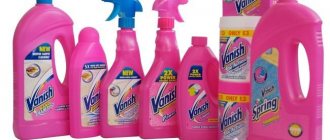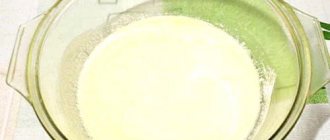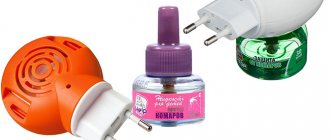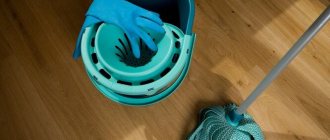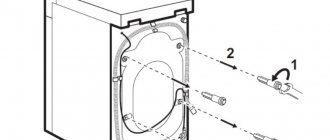The blender has long been a faithful assistant in the kitchen. The compact unit instantly whips, chops, mixes, crushes ice cubes and nuts, and prepares delicious and healthy cocktails, fresh juices, purees and smoothies.
This is an excellent choice for adherents of proper nutrition, new parents and lovers of culinary delights.
How to use a blender when cooking. In order for such a useful thing to serve for a long time, it is important to know what you can do and what you can’t do.
To do this, we have put together a guide with recommendations and advice from professionals. In this short guide, we will tell you what to pay attention to when operating both a stationary and submersible unit.
How to use a stand blender correctly?
Operation of a blender of any model, from any manufacturer, is clear and intuitive. You don't need to watch a video on how to use a blender to understand:
- If you need to chop hard and large foods (apples, potatoes, carrots, onions), first cut them into slices or cubes.
- When you add stone fruits and berries, the stones must be removed first, otherwise they may damage the blades of the device.
- If you want to make puree, first add a few tablespoons of water, milk, or broth to the bowl.
- Place the chopped and prepared ingredients into the work bowl. To use the blender correctly, make sure the mixture is between the minimum and maximum marks. Experts do not recommend reloading the bowl: firstly, the products will be crushed or whipped poorly, and secondly, the increased load reduces the service life of the motor. If the contents are less than the lowest mark, this is not scary, but it is inconvenient for you: the products will be smeared on the walls of the bowl, and you will have to collect them with a spoon for a long time.
- Close the lid and be sure to check that it snaps tightly, otherwise you will have to clean the entire kitchen from splashes.
- Select the required mode and power level.
- Some blenders are equipped with a special lid that allows you to add food while blending/whipping. This feature makes it possible to use them for mixing batter for pancakes and pancakes, preparing sauces and creams consisting of many ingredients.
- Turn on the device, wait until it finishes working, unload the bowl.
Sunflower seed pate - a healthy breakfast product
The distinctive properties of seeds are the richness of microelements necessary for the body. Let's use a blender to prepare a delicious and very unusual snack that can be eaten both for breakfast and throughout the day.
You will need:
- sunflower seeds - 1 tbsp.;
- basil greens - 30 g;
- lemon juice - from 1/3 of a whole lemon;
- garlic - 1 tooth;
- paprika, salt - to taste;
- parsley - 30 g.
Sunflower seeds are a great boost of energy for the body.
Cooking method:
- Peel the seeds and soak in cold water for several hours.
- Then combine the product with the remaining ingredients in a bowl and add to the blender jar.
- Set the desired speed and grind the mixture until smooth. After the product is ready, it can be eaten.
What should you not do with a stationary model?
In order for your unit to serve for a long time and properly, you need to use the blender correctly:
- Do not place foods that are too large or too dense with a small amount of liquid into the appliance. Grind them so as not to damage the knives or the motor.
- If the instructions for the blender do not indicate that it is capable of crushing ice, there is definitely no need to experiment.
- Do not place hot food. Neither the plastic nor the glass bowl is designed to work with them. High temperatures also have a negative impact on chopper knives. Wait until the food has cooled to at least 70°C.
- Do not keep the motor running for a long time. Modern blenders are powerful enough to grind a kilogram of product in a couple of minutes. If you have to work for a long time, say, for autumn preparations, do not forget to let the engine cool and rest.
- Long-term and continuous operation can easily damage the equipment. If you plan to actively use the blender, pay attention to models with automatic overheating protection.
- Do not use for kneading thick dough - yeast, dumplings, puff pastry. The blender is only suitable for liquid mass, medium-thick dough. A consistency that is too thick and viscous will simply damage the motor.
What sauce can be made in a blender: a delicious addition to side dishes
If you are tired of store-bought sauces made from unknown materials, we offer you the ideal option for cold gravies made in a blender.
Mustard Tartar sauce
To make a rich and thick sauce that is ideal for spaghetti, potatoes and shrimp, you will need:
- mustard - 1 tbsp. l.;
- lemon juice - 1 tbsp. l.;
- yolk - 1 pc.;
- vegetable oil - 100 ml;
- pickled cucumbers - 3 pcs.;
- green onions and parsley - several sprigs each;
- salt, pepper - to taste.
Add more grain mustard to get an original and beautiful sauce
Method of preparation: cut the greens into pieces and place in a container. We also send mustard, yolk, seasonings and chopped pickles here. Be sure to add vegetable oil at the very end. Start the blender and blend for 5 minutes.
Recommendations for caring for the stationary model
One of the advantages of stationary blenders is that the equipment does not require long and careful maintenance:
- If food accidentally spills onto the stand, wipe it off with a damp cloth or rag.
- Wash the inside of the bowl with dish soap.
- Rinse the container under the tap.
- Wipe dry with a napkin.
- Leave to dry.
- Return the clean, dry bowl to the stand.
It is best to take care of equipment immediately after use, so as not to waste time later scrubbing away old dirt and grease deposits.
History of the electrical appliance
In order to understand why a blender is needed, let’s dive into the history of the device. It will be clearer this way.
The blender appeared much earlier than almost all household appliances that many housewives have in their kitchens today. Before him, only meat grinders appeared. These are the ones that are screwed to the table, you start turning a huge handle, and you get minced meat. They appeared in the 19th century in America. And later they migrated to us. And only 25 years after them, in 1922, the first blender was born. Again in the United States of America.
Stephen Poplawski is considered the inventor of this device. He did not make it so that today we could grind food with it. He needed it to mix water, carbon dioxide crystals and syrup. Simply put, he wanted to use it to flavor soda fountain drinks. We know them as soda with syrup.
The first devices looked like a bowl on a special stand with a rotating propeller blade. And all they knew how to do was mix. Well, in principle, this is exactly what they were developed for.
And what is very interesting: they were immediately delighted not by the children, who could not live without sweets, but by the bartenders. And that's why. At that time there was Prohibition in America. But people wanted to drink. And this influenced the fact that in most establishments alcohol was sold in non-alcoholic cocktails. This was done to hide the sale of the forbidden drink from the police. Imagine what it’s like to constantly shake a shaker to mix a cocktail for each visitor. And all the visitors wanted a drink. This is precisely why the invention caused such joy among bartenders, who by that time had already managed to pump up their hands a little with shakers. They rushed to buy the invention with such excitement and zeal that they promoted it almost to the scale of a national idea.
But this is not the end of the story. 10 years after this, another American citizen, Fred Osius, refined Poplawski’s idea and became the creator of the stationary blender as we know it now. That is, he expanded the capabilities of the original invention, equipping it with special knives for chopping, chopping and pureeing products.
Further development of the unit continued in Switzerland. In the 50s of the last century, Roger Perinjac received a patent for a device that we call a hand or immersion blender. Then he called it “bamyx”. It is a combination of French words that mean whisking and mixing. Then he demonstrated it during an exhibition in Hannover. After that, it began to be used all over the world, using the immersion blender to chop, puree and grind a wide variety of foods.
He was immediately appreciated by professional chefs, and he appeared in each of them in the kitchen. Without it, modern dishes would definitely not be as interesting.
And then it was refined and improved, coming up with various attachments. And now we have a universal device that can replace almost any appliance in the kitchen.
How to use an immersion blender correctly?
The operating rules for stationary and submersible models are largely similar, so we will only focus your attention on the differences.
Here's how to properly use an immersion blender:
- Place the desired products in the deep container you choose. If they are hard or large, chop them first.
- Install the required attachment on the device.
- Place the whisk in the container and turn on the device.
- Typically, hand mixers have a limited selection of speed settings. How to use an immersion blender correctly? Many models are equipped with a “turbo” button, which allows you to activate the motor at high speed. But in order for the blender to serve you for a long time, you should not be overzealous with the “turbo” - it is only suitable for short-term activation, after which you should switch the unit to medium speed.
- If the device supports smooth speed switching, do not make sudden “jumps” from high to low and vice versa. Benefit from smooth, gradual switching.
- Mix, beat, grind to the desired degree of readiness.
Device contents
The configuration of the device depends on the principle of operation. The stationary blender includes a working base and a jug for loading products . Submersible models are more varied. Here, the set with the working base can contain various attachments: graters, whisks, choppers, mills.
look at the additional options :
- Mixing glass. It is advisable that the mixing container have high sides. In open, low containers, liquids will splash and it will not be possible to mix them thoroughly.
- The blender attachment is used for preparing pureed soups, smoothies, and baby food. Its functionality is similar to that of stationary models. The knives of such an attachment can be removable and monolithic.
- The whisk attachment will help you whip cream for a cake or prepare fluffy eggs for meringues. It is indispensable for home confectioners and anyone who likes to pamper their household with delicious desserts.
- The chopper bowl is used as a meat grinder for preparing minced meat and is used for cutting food for salad or home canning. They can be completely different in volume: from compact 0.35 liters to spacious 2.2 liters. The bowl may come with a grater, a knife for chopping ice or cutting food into slices.
- The mill is used for grinding harder products in small quantities. You can quickly prepare a portion of freshly ground coffee or turn sugar into powder.
- The puree attachment will help you prepare a really tasty side dish, and not an unpleasant paste. Plastic knives do not beat, but gently grate the potatoes, preserving their taste and attractive appearance.
What should you not do with a submersible model?
In order not to waste time repairing the device, just follow simple rules:
- Don't overdo the turbo speed. This mode is for short-term use only. If the blender is constantly running on it, the motor will simply burn out.
- Remember to chop large and hard foods first.
- Do not knead mashed potatoes without a special attachment. Otherwise, the dish will come out too homogeneous and unappetizing.
- To use your immersion blender correctly, do not handle hot foods. Wait for them to cool to at least 70°C.
- If you need to work with foods with a small percentage of liquid, be sure to add some water or broth to the mixing container.
- Do not clean or touch the attachments or blades while the device is in operation. There is a high risk of causing serious injuries and cuts to yourself.
- Do not use for kneading dough that is too thick. This consistency causes the engine to operate at high speeds, which quickly damages the device. Even if the kit includes dough beaters, they are only suitable for medium-thick dough.
Main purpose of the device
Considering the fact that the blender is one of the oldest kitchen machines, appearing long before the creation of the mixer and food processor, its mixing and chopping functions can be called universal.
Thanks to the system of rotating metal knives, the device copes perfectly with hot and cold dishes of liquid and solid consistency. If you go in order, you can divide the preparation into the following categories:
- drinks - milk, fruit, vegetable or alcohol cocktails, smoothies with pieces of ice;
- mousses and pates - curd mixtures with vegetable additives, including nuts, as well as finely ground meat or fish;
- puree – any soups or main courses that can be ground into a paste;
- liquid dough or egg mixture.
The ability of a blender to turn any food into a soft diet consistency is necessary primarily for children, the elderly if they have dental problems, as well as dieters with diseases of the digestive tract.
Special blenders for preparing baby food have jars included
But the grinding process, which more clearly reveals the taste of products, will also be appreciated by completely healthy users. Sauces, pates and puree soups occupy a worthy place in expensive restaurants. Therefore, a home kitchen assistant will give you the opportunity to create small culinary masterpieces in your own kitchen.
The blender is also an absolute favorite among fans of healthy eating or vegetarians. They prepare healthy blends of plant-based ingredients, including nuts, daily.


